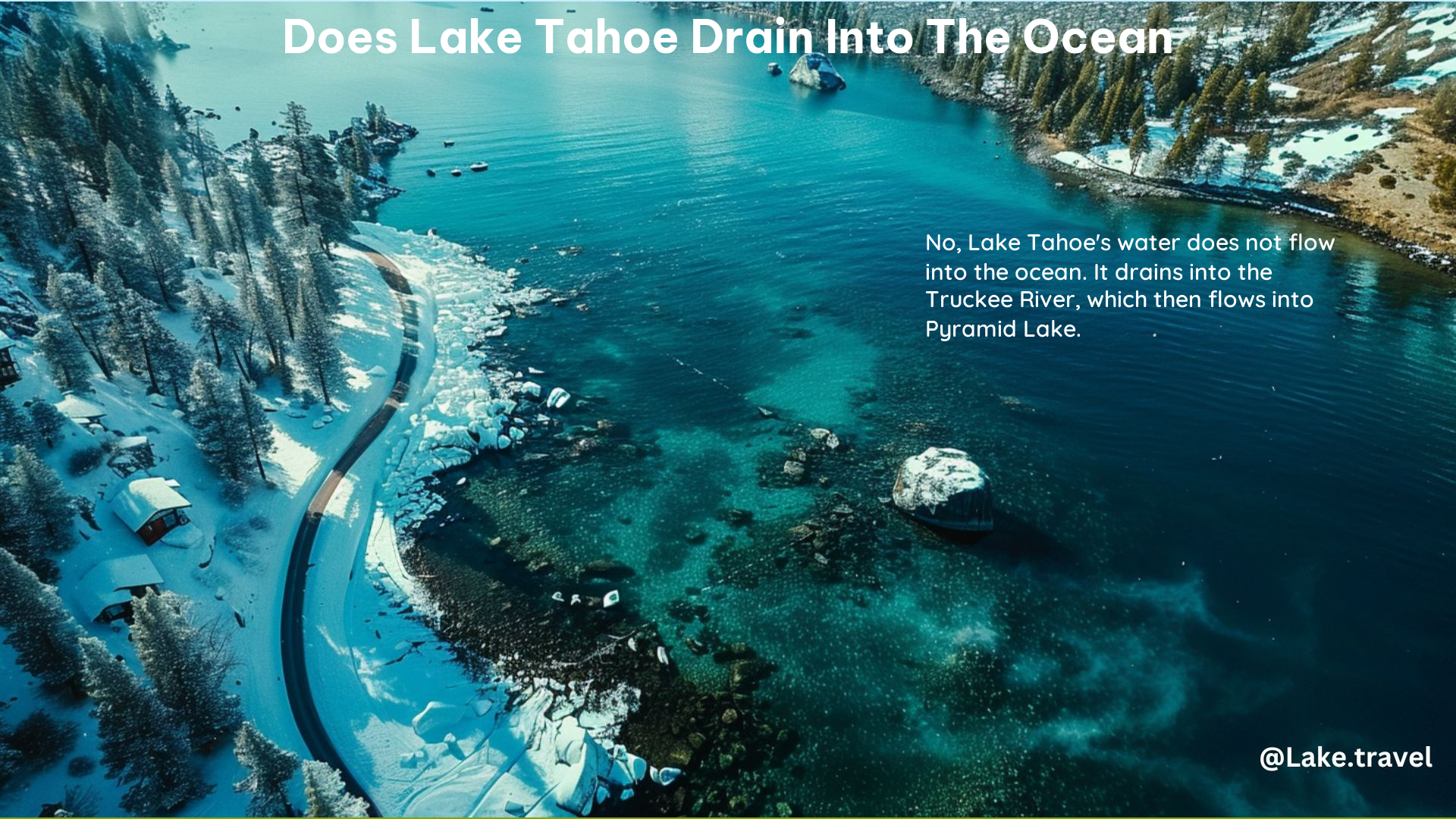No, Lake Tahoe Does Not Drain Into the Ocean
Lake Tahoe, a renowned alpine lake straddling the border between California and Nevada, is a captivating natural wonder that has long captured the imagination of outdoor enthusiasts and nature lovers alike. Despite its impressive size and depth, Lake Tahoe does not drain directly into the ocean. Instead, its waters flow into the Truckee River, which ultimately terminates at Pyramid Lake in Nevada.
The Unique Hydrology of Lake Tahoe

Lake Tahoe is a closed-basin lake, meaning it has no natural outlet that leads directly to the ocean. The lake’s water level is primarily regulated by a dam located at Tahoe City, California, which controls the outflow into the Truckee River.
Truckee River: Lake Tahoe’s Outlet
The Truckee River is the sole outlet for Lake Tahoe’s waters. This river originates from the lake’s northwestern shore and flows for approximately 121 miles (195 km) before reaching its terminus at Pyramid Lake in Nevada. Along its journey, the Truckee River provides water for various downstream communities and agricultural uses.
Evaporation: A Significant Water Loss
While the Truckee River carries away a portion of Lake Tahoe’s water, a significant amount is lost through evaporation. On average, the lake’s surface experiences an evaporation rate of approximately 0.1 inch (2.5 mm) per day, which accounts for about two-thirds of the lake’s total water outflow.
The Importance of Lake Tahoe’s Hydrology
The unique hydrology of Lake Tahoe plays a crucial role in the region’s ecosystem and water management strategies.
Maintaining Water Quality
The fact that Lake Tahoe does not drain directly into the ocean helps to maintain the lake’s exceptional water clarity and quality. The closed-basin nature of the lake allows for the natural filtration and sedimentation of water, which helps to preserve the lake’s renowned clarity and blue hue.
Water Resource Management
The regulation of Lake Tahoe’s water level and outflow through the Truckee River is essential for managing water resources in the region. The dam at Tahoe City allows for the controlled release of water to meet the needs of downstream communities, agriculture, and environmental considerations.
Ecological Significance
The Truckee River and its connection to Lake Tahoe are vital for the region’s aquatic ecosystems. The river supports a diverse array of fish species, including the threatened Lahontan cutthroat trout, and provides important habitat for various other wildlife.
The Unique Characteristics of Lake Tahoe
Lake Tahoe is renowned for its exceptional natural beauty and unique characteristics, which are closely tied to its hydrology.
Depth and Volume
Lake Tahoe is the second-deepest lake in the United States, with a maximum depth of 1,645 feet (501 meters). It is also the largest alpine lake in North America, with a total volume of 122 million acre-feet (150 cubic kilometers).
Water Clarity
One of the most striking features of Lake Tahoe is its remarkable water clarity. The lake’s clarity is measured by the depth at which a Secchi disk (a white disk used to measure water transparency) can be seen. Lake Tahoe’s clarity is among the highest in the world, with an average Secchi depth of around 70 feet (21 meters).
Unique Geology
Lake Tahoe’s formation is the result of a complex geological history, including tectonic activity and glaciation. The lake occupies a graben, a depressed area of land bounded by parallel faults, which gives it its characteristic U-shaped basin.
The Importance of Preserving Lake Tahoe
Given the unique characteristics and importance of Lake Tahoe, preserving the lake’s health and water quality is a top priority for the region.
Environmental Threats
Lake Tahoe faces various environmental threats, including the introduction of invasive species, the impacts of climate change, and the effects of human development and recreation. Addressing these challenges is crucial for maintaining the lake’s ecological balance and water quality.
Conservation Efforts
Numerous organizations and agencies, such as the Tahoe Regional Planning Agency and the League to Save Lake Tahoe, are dedicated to the conservation and restoration of Lake Tahoe. These efforts include initiatives to reduce pollution, manage stormwater runoff, and promote sustainable development in the region.
The Role of Visitors
Visitors to Lake Tahoe can also play a vital role in preserving the lake’s unique environment. By practicing responsible tourism, following Leave No Trace principles, and supporting conservation initiatives, visitors can help ensure that Lake Tahoe remains a pristine and sustainable natural wonder for generations to come.
In conclusion, while Lake Tahoe does not drain directly into the ocean, its unique hydrology and characteristics make it a truly remarkable natural resource. By understanding and appreciating the lake’s complex ecosystem, we can work together to protect and preserve this iconic alpine gem for the enjoyment and benefit of all.
